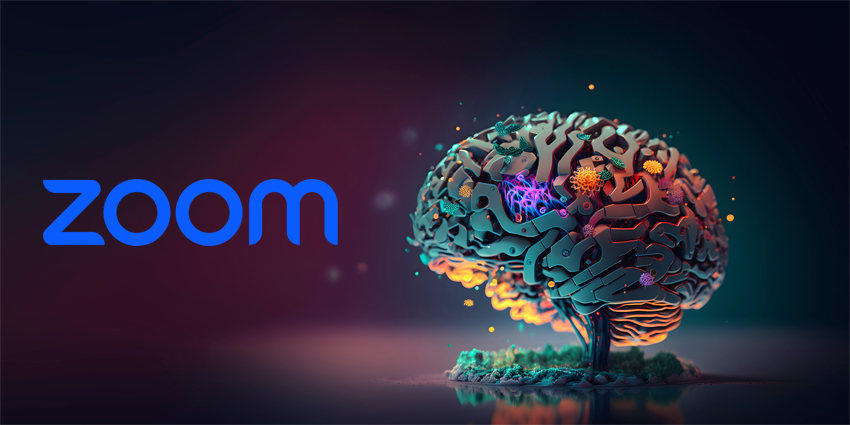Until 2024, Microsoft had only circled the contact center market.
Before then, it slowly added CCaaS capabilities to its Dynamics CRM applications and certified third-party contact center integrations for Microsoft Teams.
Sure, it had the Microsoft Digital Contact Center Platform. However, this offered little more than a framework to integrate other contact center solutions with its broader cloud capabilities.
Finally, in July 2024, the enterprise tech giant committed fully to the space, launching its Dynamics 365 Contact Center.
Shortly after, Satya Nadella, CEO of Microsoft, promised to “save hundreds of millions with contact center GenAI,” laying down the tech giant’s lofty ambitions.
In doing so, Nadella recognized the massive opportunity to couple the brand’s significant AI investment with contact center innovation.
However, to seize that opportunity, Microsoft first had to simplify the mishmash of contact center tools it had accumulated over several years of dabbling in the space.
In 2024, the tech giant did that. 2025 will likely see AI bonanza click into gear.
Microsoft’s New-Look Contact Center Portfolio
Microsoft offers three core contact center propositions. These are:
1. Microsoft Dynamics 365 Contact Center
The Dynamics 365 Contact Center is now Microsoft’s core enterprise CCaaS offering.
Yet, despite the name, it’s not tied to the Dynamics platform. The solution also pulls in elements from and integrates with Microsoft’s broader ecosystem.
For instance, it enables contact center swarming on Teams, leverages Nuance’s IVR technology, and harnesses capabilities from Power for automation & analytics.
Additionally, as with Teams, Microsoft built the Dynamics 365 Contact Center on Azure Communications Services (ACS).
Lastly, Microsoft is spending billions on AI, and this new CCaaS platform offers a significant opportunity to put that investment to work. Indeed, Microsoft is already adding AI Agents to the platform (more on this later).
Going forward, the Dynamics 365 Contact Center will be Microsoft’s primary contact center offering.
Signaling this, the tech giant has reverted all internal links from the Microsoft Digital Contact Center Platform to the Dynamics CCaaS platform’s product page.
2. Queues app for Microsoft Teams
Not every contact center needs all the bells and whistles of an enterprise CCaaS platform. The Queues apps for Teams offers smaller businesses a lite contact center alternative.
The offering makes basic routing and reporting capabilities natively available on Microsoft Teams as a $10 per user, per month add-on.
With these capabilities, customer service teams can manage, track, and handle inbound and outbound customer interactions.
Meanwhile, service leaders may leverage the Queues app to supervise teams, prioritize queues, and even guide customer-facing agents.
While Microsoft may have to add digital channels to gain more market share, providing a contact center lite will appeal to many <50-seat contact centers already leveraging Teams.
Moreover, midmarket contact centers looking to pull in external experts to engage in customer conversations can also consider how they may take advantage of Queues.
However, enterprise operations wishing to run a large-scale contact center on Teams will likely continue to leverage one of Microsoft’s certified integrations.
3. Microsoft Teams Contact Center Integrations
Lastly, Microsoft is still certifying third-party CCaaS vendors building contact center integrations for Teams. These include the likes of Genesys, NICE, and Five9.
Indeed, it added another seven vendors in 2024, taking the total number of trusted partners to 30.
Altogether, Microsoft has three models for its CCaaS integrations: Connect, Extend, and Power.
Connect is the most basic, leveraging an SIP trunk that runs between the two systems. Meanwhile, Extend is API-integrated, allowing users to take calls within an embedded UI.
All certified offerings run on these two models, despite Microsoft suggesting for three years that Power integrations are “coming soon”.
When they eventually do come, Power integrations will include Microsoft ACS on the back end, a dedicated UI for formal agents, native Teams connectivity, and more.
Still, Microsoft’s partners are working on that, and – with Microsoft stepping up its market intent – 2025 may be the year these integrations see the light of day.
What to Expect from Microsoft in 2025
By developing enterprise, SMB, and integration-based contact center propositions, Microsoft has created many fruitful routes to market – and Tom Arbuthnot, Co-Founder of Empowering.Cloud, is bullish over its chances for success.
“To anybody sleeping on Microsoft… just look at Teams,” he said in conversation with CX Today. “We had OCS, Lync, Skype, and then we got to Teams. Microsoft, when they target a market, they persist.”
As Microsoft does so in 2025, it’ll likely focus on two key areas: AI and ecosystem.
1. AI, AI, & More AI
With agentic AI coming into the fold, Microsoft can put contact center AI to work in new, inventive ways that’ll help it create a buzz.
Already, it’s doing this. For instance, it announced two pre-configured AI Agents for the Dynamics 365 Contact Center in November 2024.
First is an Intent Agent that analyzes how agents successfully handle particular customer contacts.
Then, there’s a Knowledge Agent that takes intel from the Intent Agent to craft new knowledge content for the contact center team.
From there, Microsoft customers can use Copilot Studio to create AI Agents in the Dynamics 365 Contact Center that solve customer queries autonomously by leveraging that knowledge.
In delivering this potentially virtuous cycle, Microsoft demonstrates how its AI Agents can drive innovation in customer service and automate longtail contact center workflows.
Expect more AI Agents to come in 2025, perhaps even those that cross into other Microsoft apps and pull its ecosystem together.
2. Ecosystem & Orchestration
By tagging its CCaaS platform with the Dynamics 365 name, Microsoft signals its intent to integrate the contact center with where the rest of the organization works.
In closing that gap between the contact center and adjacent Dynamics technologies – including the various CRM apps, the ERP, HR software etc. – it comes further into the view of CIOs and CTOs.
From there, they can consider ways to pull in the contact center, leveraging its firehouse of customer data to support teams and AI applications across the ecosystem.
Signaling this intent, Microsoft has also launched Dynamics 365 Customer Service Premium, which combines the 365 Contact Center with 365 Customer Service Enterprise, its customer support CRM.
In doing so, Microsoft hopes to create a more cohesive customer experience environment, with fewer vendors, to ensure a more consistent, connected customer and agent experience.
In December, the tech giant hinted to CX Today that it also aims to build out its journey orchestration solution beyond marketing and across customer-facing teams.
If it does so, Microsoft may enable new, cross-function journeys and utilize AI Agents to automate more of the front- and back-office processes that support them.
The Opportunity Awaits…
Most contact centers are clinging to their legacy platforms. Indeed, little over a year ago, Gartner analysts estimated that over two-thirds remain on-premise.
While there are many reasons for this – i.e., resource issues, regulatory concerns, tricky migration workloads – the cloud is, ultimately, where the industry is heading.
Indeed, in November, Research and Markets predicted the CCaaS market’s value will grow from $8.55BN in 2024 to $16.30BN in 2029.
As such, there’s lots of business for Microsoft to win, and that includes existing CCaaS customers unhappy with their current providers. That number is surprisingly high.
So, whether it’s first-time shoppers or returning buyers looking to find a new vendor to pin their hopes and dreams on, Microsoft can succeed in this burgeoning – albeit crowded – market.
By bringing its AI story deeper into the contact center, connecting its CX ecosystem, and telling more customer stories, many onlookers – like Arbuthnot – believe it’ll quickly win market share.
Of course, some may note that a CCaaS evaluation is highly complex and downplay Microsoft’s market expertise. Yet, as it’s not an easy process, the element of “no one ever gets fired for choosing Microsoft” is stronger than ever.







